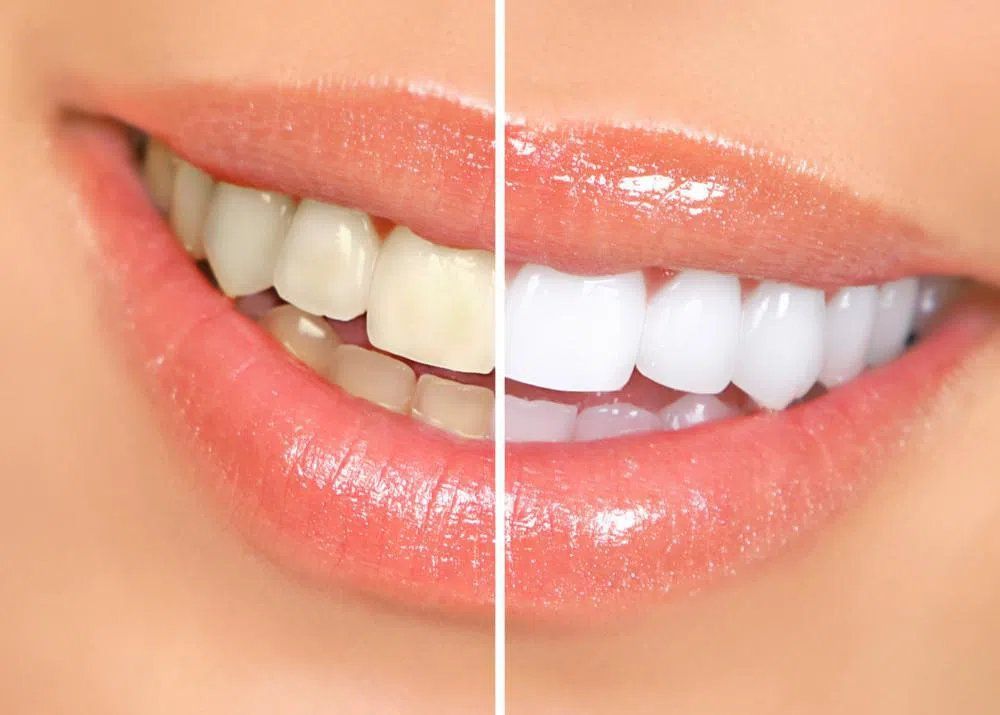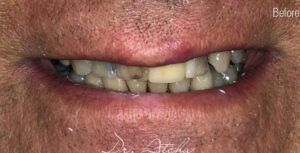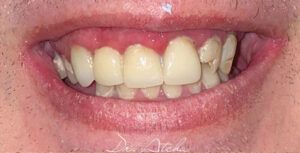Having a beautiful smile is important for your overall appearance, and it can do a lot for your self-confidence too. But the fact is, virtually no one has a perfect smile naturally. Most all of us need some help in correcting flaws and defects that make our smiles look less than desirable. And when it comes to correcting smile issues, veneers are one of the most versatile options around.
Veneers are porcelain “covers” that are attached to the front surfaces of your teeth. Today’s veneers are made of durable porcelain that can be tinted and shaped to match your teeth and your smile so the end result is flawless. When it comes to veneers, at New Teeth Chicago Dental you have two primary options: “traditional” porcelain veneers and Lumineers®, an innovative “twist” on dental veneers that offer several significant advantages for a lot of patients. Here’s how to tell which option is a better choice for you.
Porcelain veneers and Lumineers: How they compare
Both porcelain veneers and Lumineers can be used to correct the appearance of:
- crooked teeth
- gaps between teeth and other spacing issues
- teeth that look “too small”
- deeply stained teeth (including stains that can’t be whitened or “bleached away”)
- teeth with uneven or worn edges
- teeth that are chipped or cracked
Both porcelain veneers and Lumineers are created in a dental lab that specializes in state-of-the-art restorations, and both can be placed in two visits. Once in place, you’ll care for both the same way, with regular brushing and flossing and routine office visits to make sure your restorations stay in good shape.
The differences between veneers and Lumineers
Although both veneers and Lumineers are used to treat the same issues, there are some big differences. First, although porcelain veneers are thin, Lumineers are a lot thinner. In fact, at 0.3 mm, Lumineers are about half as “thick” as porcelain veneers, which are about 0.5 mm. That may not sound like much, but it makes a big difference when it comes to applying them.
Because porcelain veneers are thicker, Dr. Atcha will need to remove some of your natural tooth material in order to “make room” for the veneer so its surface is level with the surfaces of the neighboring teeth. Once that tooth material is removed, it’s gone for good, which means you’ll always need to have a cover for that tooth (either a veneer or a composite covering). In short, veneers are not reversible.
By contrast, since Lumineers are super thin, Dr. Atcha doesn’t have to remove tooth material in order to fit the Lumineer to your tooth. That means if you change your mind somewhere down the road and want to have the Lumineer removed, you can. Since no tooth material is removed, Lumineers are “reversible.”
Since Lumineers are a lot thinner, many patients find they feel and look more natural. That’s because the special thin ceramic used in Lumineers is more translucent than the porcelain used in regular veneers, so it tends to reflect light more like your natural teeth.
And that extra “thinness” has another advantage: Since Dr. Atcha doesn’t need to remove tooth material, you won’t need any anesthetic during your fitting. With porcelain veneers, Dr. Atcha typically numbs the tooth before removing tooth material to avoid discomfort and sensitivity that can occur. While you wait for your veneer to be made, you’ll need to wear a tooth-colored composite covering to protect your tooth.
Of course, just because Lumineers are thin doesn’t mean they’re not durable. In fact, the material used in Lumineers is so strong, you can expect your Lumineers to last as long as 20 years. That’s about twice as long as a traditional porcelain veneer, which will probably need to be replaced in about a decade or so. When it comes to cost, Lumineers are more expensive than traditional porcelain veneers, but in recent years, Lumineers have come down in price, so the difference isn’t all that significant.
Lumineers or porcelain veneers: Which is right for you?
Both Lumineers and porcelain veneers can be really effective in correcting a lot of cosmetic issues, and both can help you enjoy a more beautiful smile (and increased confidence too). To learn more about both products and to decide which one is a better option for you, contact the practice today.

















